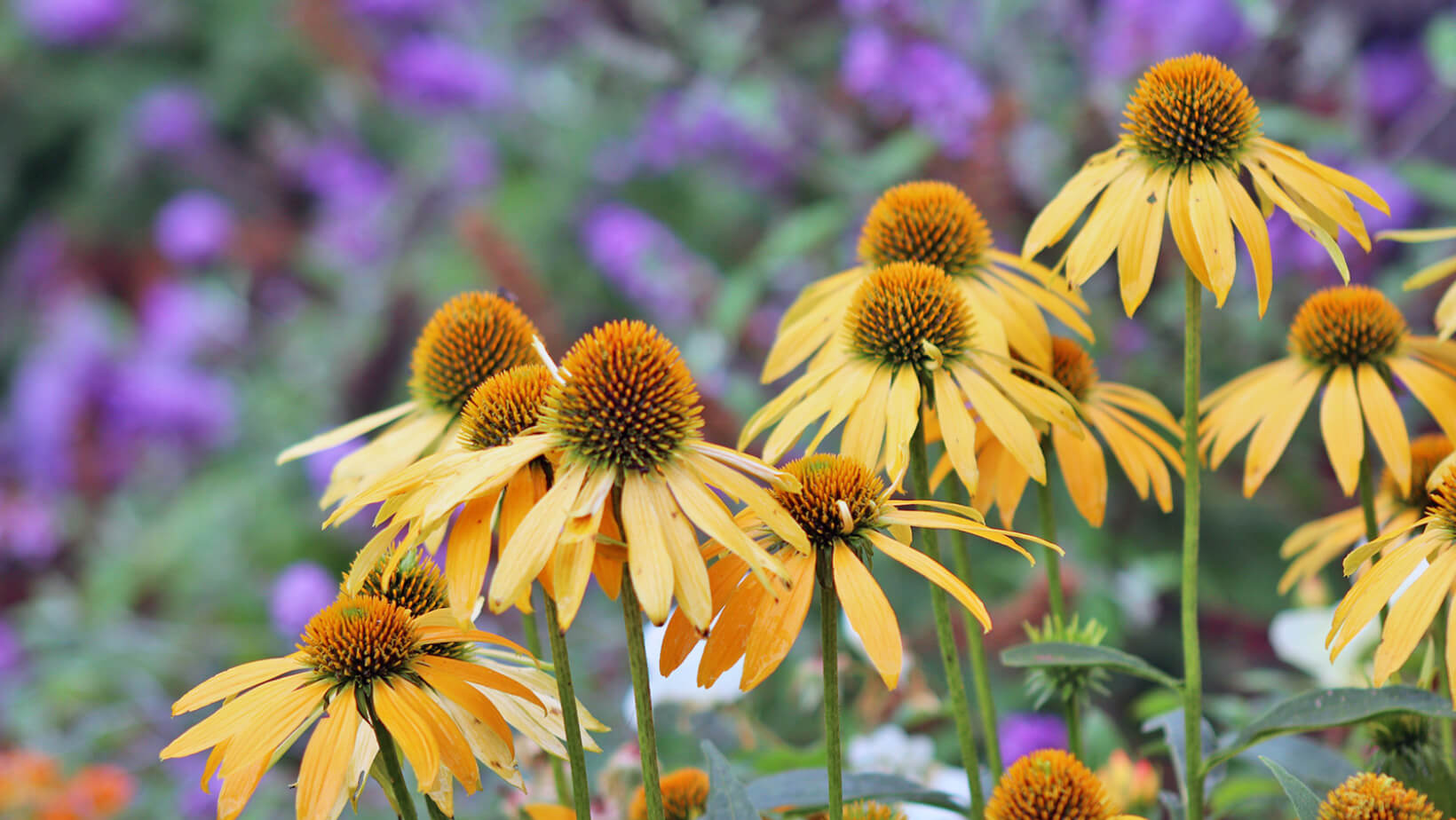
Cultivating Creativity: Gardening and the Creative Process
It’s summer and our garden is in full bloom. Watching the birds, butterflies and yes, even the bunnies visit the hydrangeas, coneflowers, and butterfly bushes bring me such joy! (ok, truth time… as long as the bunnies are eating the clover, I’m good!) It is satisfying to get my hands in the soil, cutting back spent blooms and removing the weeds that keeps me connected with nature. I prefer to enjoy the sounds of nature instead of listening to music or podcasts.
Spending time outside is the time when I get a lot of my ideas… for my clients, solutions to challenges, and content – like this article! The art of gardening is a lot like the creative process. We sow the seeds (like our ideas) and look after them until these ideas are ready to bloom into something amazing!
Gardening: An art and a science
As a landscape designer, our personal garden has become a place to experiment, push the zone boundaries and try different plants and combinations until I find the ones I like. Gardening can be considered both an art and a science, according to the Encyclopedia Britannica. The arrangement of plants with considerations to bloom succession, growth, height and width, texture, and form is an art. The science part encompasses plant cultivation through botany, plant physiology and chemistry. Is the plant thriving in the correct light conditions, soil composition, and hardiness? It can be a challenge to achieve both but that’s what makes gardening fun and no two spaces are alike!
An artist’s garden:
One of my more interesting design projects was for a watercolour artist who asked me to design her back garden with pockets of seasonal interest that would give her inspiration throughout the year. She had several requests of specific flowers she preferred to paint and it was my job to arrange them in combinations. Instead of having plants all through the garden blooming during the different seasons, I designed little vignettes of similar flowers that would bloom together (iris, peonies and lavender / coneflowers, asters and sedum). Her garden changed with the seasons giving her many opportunities for her creative process.
Preparing the garden:
When we prepare a garden, we start with good soil and choose the right seeds or plants that will grow in that space. We record what we have planted, provide sunshine and water and watch daily for sprouts of new growth. During the creative process, it’s not much different! We may start out with lots of ideas which are our seeds. It takes time to allow ourselves to explore our ideas and let them grow and develop.
How do you record your ideas? Journaling or a sketchbook allows for thoughtful consideration or development of an idea. Sometimes there are so many ideas, it may require a critical eye to weed through them all and pick the one(s) that is right for you at this time.

Image from Canva
Growing a Garden of Ideas:
Nurturing seedlings as they grow can be a busy time. A storm might injure tender stems, or insects might affect young leaves – they need consistent care, attention and effort to get them to the next stage.
Our ideas need as much care as seedlings. Perhaps a new skill needs to be developed or some other learning needs to happen to grow this idea, such as trying a new media. We need to find a way to keep this inspiration alive and let it grow strong and healthy. Weeds can become distractions or setbacks as we travel along this creative journey.
Gardening is a lot of trial and error, and I speak from experience! Every season is different and every year is different from the previous one. This year we have had a lot of rain which is wonderful for the hydrangeas but the tomatoes are missing the sun and heat. It doesn’t bother me, it’s part of what makes gardening interesting.
Depending on the season of your creative journey, not every idea will come to fruition. Some ideas may have to simmer in the background while you encourage other ideas to grow and bloom. It’s ok if one of your ideas doesn’t happen right now, perhaps the timing will be better in the future. Don’t lose hope!

Time to Harvest:
It’s harvest time in our veggie garden. We are now enjoying the fruits of our labour quite literally. Every day we pick lettuce, kale, beans, zucchini, peppers and a few tomatoes. The potatoes, carrots and cucumbers are still growing and we look forward to them later this summer.
Some ideas, once planted will be ready to be released to the world almost immediately, such as a new painting subject or inspiration. While others take months, sometimes years to grow, and be nurtured or perhaps become a part of a journey to a new idea. The start of a new writing project may lead to a journey down a different path You will know when it is time to let your idea bloom and share your creative journey with the world.
Something I do at the end of every growing season is to evaluate what plants did well, which ones struggled and what I would do differently. Let’s compare that to the creative process – time to go back to your sketchbook or journal of ideas. How is this process working and what would you do differently to nurture and grow your ideas?
Cultivating Creativity
Embrace the moment to trust in the power of your creative skills. As you discover the magic that begins with a single seed of an idea, remember that it’s not just about the end result, but the journey itself. Cultivate your ideas with a blend of patience and intuition, much like a gardener tenderly nurtures a seedling.
Whether you are tending to a garden bed or crafting a masterpiece, remember that the process is a journey to savoured. The seeds are in your hands and the possibilities are endless. Embrace the parallels between gardening and the creative process, and watch as your creative endeavours blossom into something truly amazing

